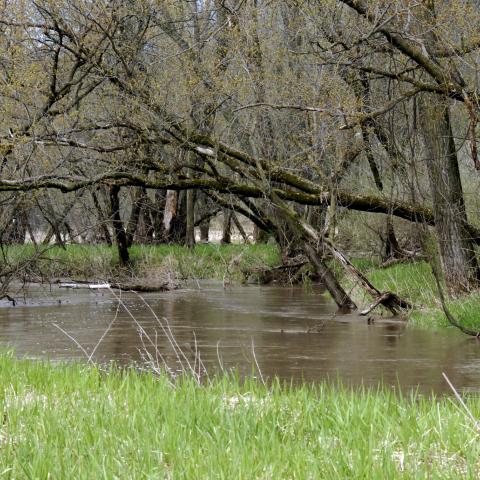
The Food Security Act’s highly erodible land (HEL) provisions were enacted to protect the Nation’s long-term capability to produce food and fiber.
To participate in most United States Department of Agriculture (USDA) programs, agricultural producers with HEL must manage HEL fields according to an approved conservation plan or conservation system which protects the land from water, wind, and ephemeral gully erosion.
Farming HEL Fields
Program participants who plant or produce agricultural commodities on HEL are required to farm according to a NRCS approved conservation plan, or maintain an approved conservation system.
NRCS, upon request, will provide technical assistance for conservation plan development. The plan is designed to provide certainty that the approved conservation measures will meet HEL conservation requirements. The participant’s decisions on wind, water, and ephemeral gully erosion control measures are scheduled and documented in the plan to ensure:
- a 75 percent reduction of the potential erosion; OR
- less than two times the tolerable soil loss (T) for the predominant HEL soil.
- And that ephemeral gully erosion is controlled.
States may also have approved conservation systems in the eFOTG for certain HEL soils. These conservation systems detail the minimum level of treatment required to meet the HEL erosion protection requirements.
If there is a need to evaluate a program participant’s compliance with the HEL provisions when they are not using an approved conservation plan or system, their current crop rotations and management will be evaluated to determine if they meet the soil protection requirements.
Bringing New Land into Agricultural Production
Farmers proposing to grow agricultural commodities on land that did not have cropping history prior to Dec. 23, 1985 (also known as “sodbusting”), must notify FSA of the new cropland on Form AD-1026. The notification will be referred to the NRCS to determine if the field is HEL and the participant and FSA will be notified via Form NRCS-CPA-026-HELC. If the field is HEL, the program participant is required to implement a conservation plan or system that limits the erosion to the tolerable soil loss (T) for the predominant HEL soil on all sodbusted fields.
How to Remain Compliant with HEL Provisions
Program participants are required to continue to follow an approved conservation plan or conservation system to control wind, water, and ephemeral gully erosion. If the participant wishes to change management that could result in increased erosion rates, they are encouraged to contact NRCS for technical assistance.
How Does USDA Determine Conservation Compliance?
Program participants self-certify compliance by filing Form AD-1026 when enrolling in USDA programs. If unsure if an AD-1026 is filed for your land, contact an FSA representative at the local USDA Service Center.
Program participants are subject to a review of their self-certification because of a whistleblower complaint, a Farm Service Agency compliance review for USDA payments, or through an annual random status review process conducted by NRCS. Crop rotations, crop residue management, and gully erosion control measures are reviewed to confirm compliance with the HEL conservation provisions. If applicable, participants will be properly notified when selected and invited to participate in the review.
Resources for Your Local Area
Given the geographical differences of soil characteristics across the Nation, HEL soils have been identified for each State.





